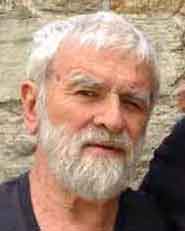The first is that although Sagan juxtaposes the findings of science against superstition and pseudo-science, his real intent is to recommend critical thinking. This becomes evident from two considerations.
The first. He tells us that while teaching at Cornell, the chairman of the astronomy department, Yervant Terzian, allowed him to teach critical thinking in a course titled “Astronomy 490.” (p. 435)
The other matter is that this critical thinking course was composed of what he described as “baloney detection kit,” described in detail in the essay “The Fine Art of Baloney Detection.” My point is that science and the methods of science are a subset of critical thinking, and this is admitted by Sagan himself in footnote to the essay “Science and Witchcraft”: “I do not wish to suggest that advocacy of science and skepticism necessarily lead to all the political or social conclusions. Although skeptical thinking is invaluable to politics, politics is not a science.” (p. 401) Exactly!
My second caveat is that Sagan’s skepticism and criticism is too narrow in this book. It should have included a wider political criticism as part of “baloney detection.” But, to be fair, he does express some political criticisms. One example is given in his “baloney detection kit” under the entry:
“weasel words (e.g., The separation of powers of the U.S. Constitution specifies that the United States may not conduct war without a declaration by Congress. On the other hand, Presidents are given control of foreign policy and the conduct of wars, which are potentially powerful tools for getting themselves re-elected. Presidents of either political party may therefore be tempted to arrange wars while waving the flag and calling the wars something else — “police actions,” “armed incursions,” “protective reaction strikes,” “pacification,” “safguarding American interests,” and a wide variety of “operations,” such as “Operation Just Cause.” Euphemisms for war are one of a broad class of reinventions of language for political purposes. Talleyrand said, “An important art of politicians is to find new names for institutions which under old names have become odious to the public”).” (p. 216)
Sagan also expresses moral disapproval of President Truman’s dropping of atom bombs on Nagasaki and Hiroshima. And he also criticizes the Alien and Sedition Acts.
But Sagan’s skepticism and criticisms are too narrow. He could have criticized the office of the U.S. President, as such. He could also have criticized the U.S. Constitution (as, for example, as inferior to that of Switzerland). And he could also have criticized the institution of capitalism. But he does none of this.
